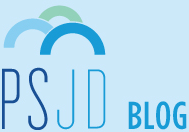Public Interest News Bulletin – January 11, 2013
By: Steve Grumm
Happy Friday, folks. Your author’s a bit under the weather, so you’re spared from my typical ruminations and editorializing. Here’s what we’ve got on the public interest and access-to-justice fronts (it being a good week for Maryland-based AtJ enthusiasts):
- $6.2 million to Old Line State legal aid providers for housing work;
- 20 Biglaw attorneys to work as special assistant DAs in suburban Philly county;
- the NLJ’s Pro Bono Hot List, hot off the presses;
- a Maryland Access to Justice Commission report on legal aid’s economic impact;
- Michigan Law’s new entrepreneurship clinic.
The summaries:
- 1.10.12 – “Attorney General Douglas F. Gansler and officials from the Department of Housing and Community Development on Thursday awarded $6.2 million from the national mortgage settlement to nine legal aid groups in order to expand the availability of low-cost and pro bono legal services to Maryland homeowners facing foreclosure. Here’s how the funds are being distributed: Maryland Legal Aid, $3.6 million; Civil Justice Inc., $1.4 million; Maryland Volunteer Lawyers Service, $930,000; St. Ambrose Housing Aid Center, $600,000; Pro Bono Resource Center of Maryland, $565,000; Public Justice Center, $510,000; Community Legal Services of Prince George’s County, $850,000; Mid-Shore Pro Bono Inc., $342,000; and Allegany Law Foundation Inc., $200,000.” (Full piece in the Baltimore Sun.)
- 1.7.12 – “The [suburban Philadelphia] Montgomery County District Attorney’s Office is gaining a bit of free human capital, thanks to a relatively new partnership with an international, Philadelphia-based law firm. Twenty lawyers from the firm of Morgan, Lewis & Bockius are joining the DA’s office for some experience as special assistant district attorneys.” (Story from the Times Herald.)
- 1.7.13 – the National Law Journal released its 2013 Pro Bono Hot List: “There’s an unfamiliar face in the crowd this year — the crowd being the 10 legal organizations we selected for The National Law Journal‘s Pro Bono Hot List. For the first time, we’ve included a corporate legal department — that of International Business Machines Corp. We did so in recognition of IBM’s work on behalf of people whose homes were damaged or destroyed by Hurricane Sandy, but also to highlight increasing corporate commitment to pro bono projects.”
- 1.7.12 – “Maryland civil legal service programs not only benefit the poor but also save the state millions per year. Legal assistance to low-income Marylanders is a significant economic boost to the state and benefits more than just those receiving aid, according to a report just released by the Maryland Judiciary’s Access to Justice Commission…. In 2012, Maryland legal service programs preserved or found housing for almost 1,000 individuals and helped obtain 2,825 civil protective orders for clients. But the economic impact of legal services for the poor went far beyond the families helped, creating $190 million in total economic impact, including $12.6 million in economic stimulus to the state, $3.7 million in state expenditures saved, and $882,096 in tax revenue.” (Here’s the full op-ed in the Baltimore Sun. And here’s the AtJ Commission’s report.)
- 1.6.12 – a profile of Michigan Law’s new entrepreneurship clinic: “In addition to helping student entrepreneurs, the program and clinic benefit law students who hope to one day work in the startup sector. ‘For the law school students, the clinic consists of two parts, a classroom component and then actually representing their clients,’ clinic director Dana Thompson said. ‘… Most of law school is about taking classes and learning about the theory of corporations or torts or contracts. Then they come to us so we can put everything together and they can actually work with a startup.’ The clinic utilizes the ‘student practice’ rule, which allows law students to represent clients as long as a licensed attorney supervises them. Thompson said she…received more than 100 applications for 16 spots in the clinic’s first semester in the spring of 2012.”
- Super Music Bonus! How about some Neko Case? This is the beautiful “Bought and Sold.”

